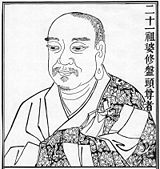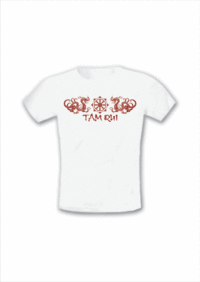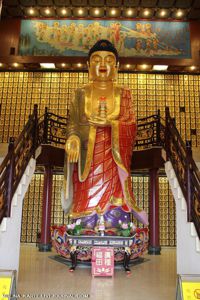Vasubandhu
From Buddha World
Vasubandhu (fl. 4th c.) was, according to Mahayana Buddhist tradition, an Indian Buddhist scholar-monk, and along with his half-brother Asanga, one of the main founders of the Indian Yogacara school. However, some scholars consider Vasubandhu to be two distinct people. Vasubandhu is one of the most influential figures in the entire history of Buddhism. In the Jodo Shinshu branch of Buddhism, he is considered the Second Patriarch. In Zen, he is 21st Patriarch. Born in Gandhāra in the fourth century, he was at first, or according to other scholars the first Vasubandhu was, a Sarvāstivādin when he initially studied Sarvāstivādin Abhidharma, as presented in the Mahā-vibhāsa. Dissatified with those teachings, he wrote the Abhidharmakośa in verse and his auto-commentary, the Abhidharmakośa-bhāsya, an important summary and critique of the Mahāvibhāsa from the Sautrāntrika viewpoint. He later converted to Mahāyāna, or according to other scholars the other Vasubandhu was a Mahayanist, and composed many other voluminous treatises, especially on Yogācāra doctrines. Most influential in the East Asian Buddhist tradition was probably the Trimśikā, the Thirty Verses on Representation-only and its companion Vimśatikā, but he also wrote a large number of other works, including:
- a commentary to the Mahāyāna-samgraha
- the Daśabhūmikabhāsya (Ten Stages Sutra)
- Catuhśataka-śāstra
- Mahāyāna śatadharmā-prakāśamukha śāstra
- Amitayus sutropadeśa
- Discourse on the Pure Land
- Vijnaptimatrata Sastra
- Karmasiddhiprakarana (A Treatise on Action)
Vasubandhu: a possible conflation of two or three distinct personages
There may have been three distinct people conflated into the modern Vasubandhu:
- Vasubandhu the Yogācārin, the half brother of Asanga, and key personage in the founding of the Yogacara School. This Vasubandu resided at Kausambhi (near modern Allahabad, in the centre of India) where he was trained in the orthodox Sarvastivada Order of Buddhism, which had its seat at Kausambhi. This Vasubandhu was contemporaneous with King Chandragupta I, the father of Samudragupta. This information temporally places this Vasubandhu in the fourth century CE.
Some modern scholars, notably Frauwallner, have sought to distinguish two Vasubandhus, one the Yogācārin and the other a Sautrāntika, but some scholars reject this view now on the basis of the anonymous Abhidharma-dīpa, a critique of the Abhidharmakośa which clearly identifies Vasubandhu as the sole author of both groups of writings. there is no scholarly consensus on this question. According to Dan Lusthaus, "Since the progression and development of his thought ... is so strikingly evident in these works, and the similarity of vocabulary and style of argument so apparent across the texts, the theory of Two Vasubandhus has little merit."


 Русский
Русский
